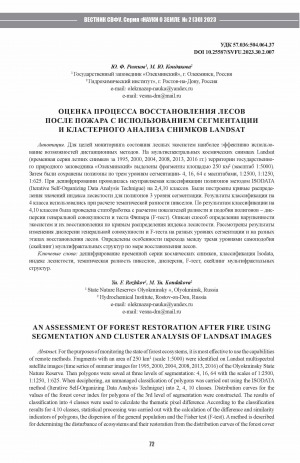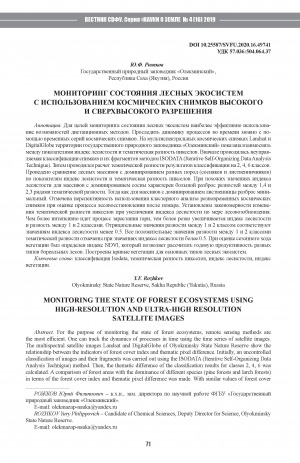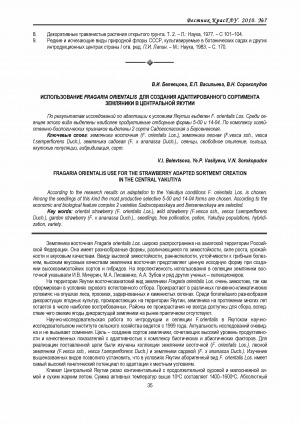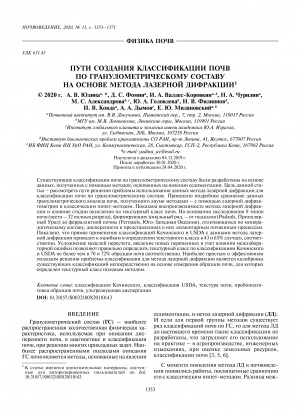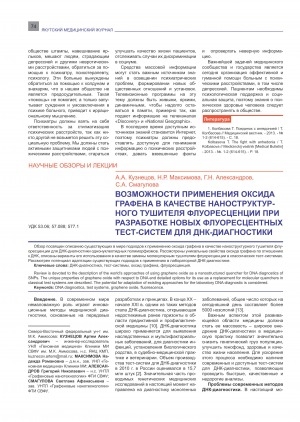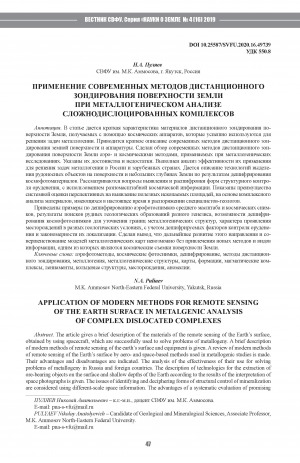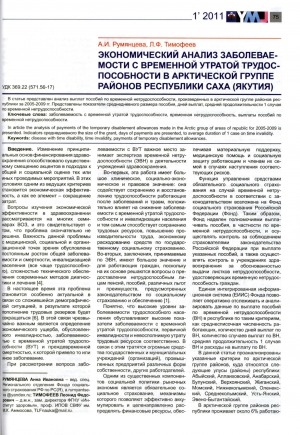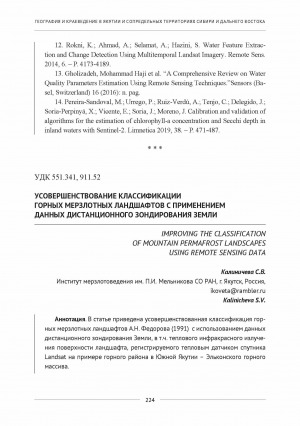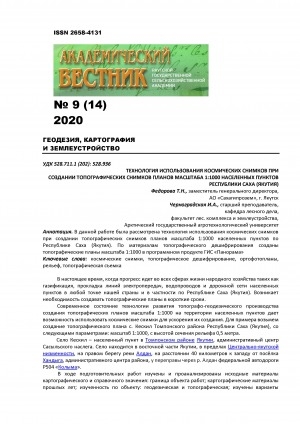Для целей мониторинга состояния лесных экосистем наиболее эффективно использование возможностей дистанционных методов. На мультиспектральных космических снимках Landsat (временная серия летних и осенних снимков за 2000, 2001, 2013, 2014 гг.) территории государственного природного заповедника ҺОлекминскийһ выделены фрагменты лесных массивов с доминированием лиственницы 2 Гмелина (Larix gmelinii Rupr.) площадью 250 км (масштаб 1:5000). Затем были сохранены полигоны по трем уровням сегментации (скейлинга) - 4, 16, 64 с масштабами, 1:2500, 1:1250, 1:625. При дешифрировании проводилась неуправляемая классификации полигонов методом ISODATA (Iterative Self-Organizing Data Analysis Technigue) на 2,4,10 классов. Классификация на два класса использовалась для расчета индекса лесистости. Сезонные изменения определялись по разности значений индекса лесистости полигонов летом и осенью. Показано, что чем больше разность, тем больше доля лиственницы в смешанных древостоях. Были построены кривые распределения значений индекса лесистости для полигонов 3 уровня скейлинга. По результатам классификации на 4,10 классов была проведена статобработка с расчетом показателей разности и подобия полигонов - дисперсии генеральной совокупности и теста Фишера (F-тест). Рассмотрены результаты изменения дисперсии генеральной совокупности и F-теста на разных уровнях сегментации и в разные годы.
For the purposes of monitoring the state of forest ecosystems, it is most e ective to use the capabilities of remote methods. On multispectral Landsat satellite images (a time series of summer and autumn images for 2000, 2001, 2013, 2014) of the territory of the Olekminsky State Nature Reserve, fragments of forests 2 dominated by Gmelin larch (Larix gmelinii Rupr.) with an area of 250 km (scale 1:5000). Then the polygons were saved at three levels of segmentation (scaling) - 4, 16, 64 with scales of 1:2500, 1:1250, 1:625. During decryption, uncontrolled classi cation of polygons using the ISODATA (Iterative Self-Organizing Data Analysis Technigue) method into 2,4,10 classes was carried out. Classi cation into two classes was used to calculate the forest cover index. Seasonal changes were determined by the di erence in the forest cover index values of the polygons in summer and autumn. It has been shown that the greater the di erence, the greater the proportion of larch in mixed forest stands. Distribution curves of forest cover index values were constructed for polygons of the 3rd scaling level. Based on the results of classi cation into 4, 10 classes, statistical processing was carried out with the calculation of indicators of di erence and similarity of polygons - dispersion of the general population and Fisher’s test (F-test). The results of changes in population dispersion and F-test at di erent levels of segmentation and in di erent years are considered.


